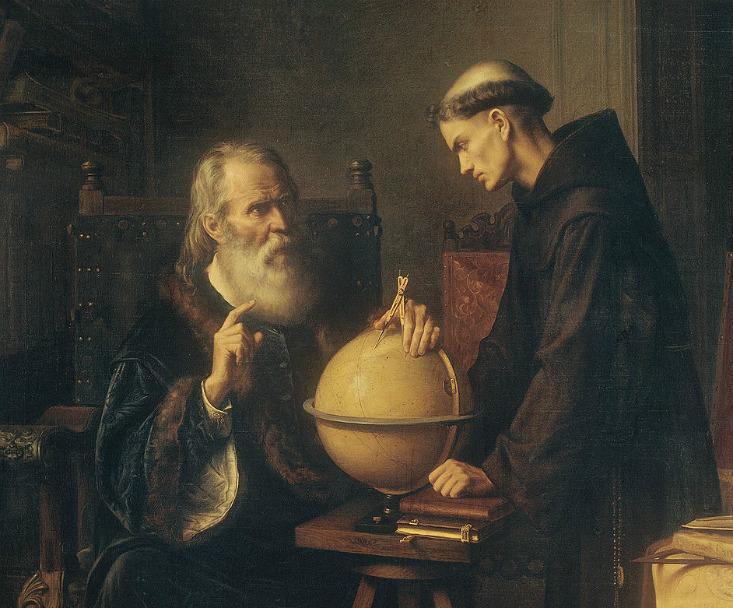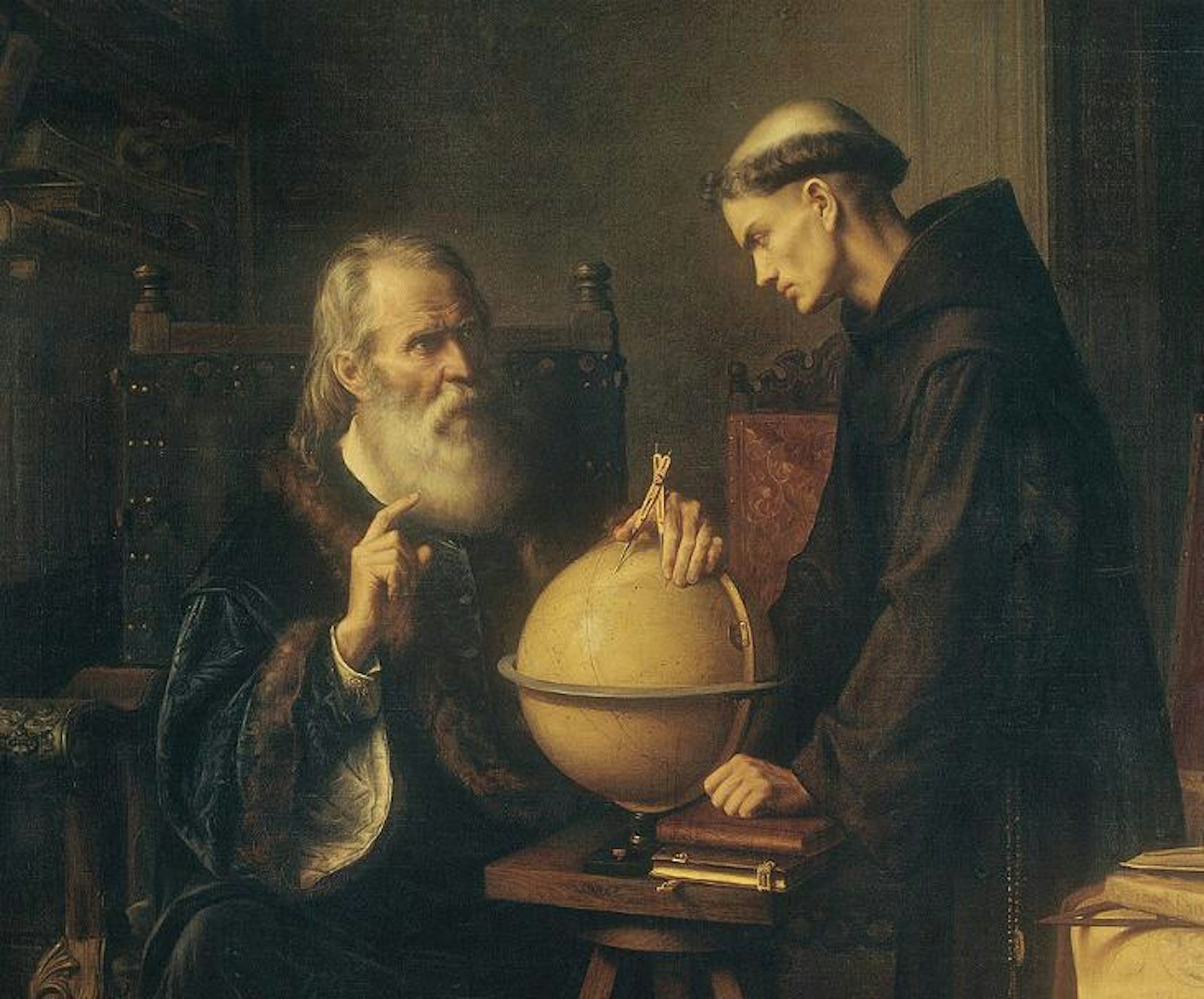
There’s a common trope in science in which a lone genius stands defiantly against a backward, close-minded establishment. Galileo’s Sun-centric astronomy vs. the Catholic Church; John Harrison’s longitude-revealing watch vs. the bigwigs who refused to accept it; Alfred Wegener’s theory of plate tectonics vs. obstinate geologists. We love stories of the underdog. But this view of science promotes the powerful misconception that heated arguments and opposition to new ideas represent a failure of science. In fact, they are a sign of its strength.
We’ve seen this most recently in the controversy over the reputed discovery of inflation in the early universe. In March of this year, a project known as BICEP2 held a press conference where they announced evidence of inflation. The theory of Big Bang inflation has been proposed as a solution to several difficulties in the Big Bang model, and the first evidence of inflation is likely a Nobel-level discovery. The press release led to a flurry of articles in the popular press (including one here at Facts So Romantic).
But the press conference was highly controversial. It was held before the work had been submitted for peer review, and as details of the work became available, it was clear that interstellar dust might invalidate the BICEP2 results. Detecting inflation relies on measuring a specific pattern within the cosmic microwave background (a dim light signature left over from the Big Bang and visible throughout the Universe) known as B-mode polarization. The problem is that there is dust and other material between the cosmic background and us, which can also produce B-mode polarization. The challenge is to filter this noise from the actual signal, which might not have been done correctly. Eventually the work was accepted for publication, but only after the authors added a a revision clarifying that dust interference was still an issue.
All of this drama might easily give the impression of scientists behaving badly: Bold claims made by one side opposed with sharp criticism by the other, all under the spotlight of public view.
But in fact this type of public debate is nothing new in science. A century ago a similar debate erupted over the size of the Universe; it came to be known to astronomers as the Great Debate. The disagreement came to a head in a public debate held by astronomers Harlow Shapley and Heber Curtis in 1920. It centered narrowly upon the question of the distance to certain nebulae, which at the time referred to anything that appeared fuzzy in the night sky (except comets). Everything from supernova remnants (such as the Crab Nebula) to entire galaxies, such as Andromeda, were all considered nebulae.
Shapley advanced the traditional view—that so-called spiral nebulae such as Andromeda must be small clouds located close to the Milky Way. A few years earlier, Shapley had mapped the shape of the Milky Way by observing globular clusters, and found that we were about 50,000 light-years from its center. (More recent measurements show the distance is close to 27,000 light-years, but he was at the right order of magnitude.) At the time, it was thought that this was the size of the Universe, and that the Milky Way encompassed all of existence.

Curtis, on the other hand, took the position that the Universe extended far beyond our own Milky Way. He argued that Andromeda and other spiral nebulae were “island universes,” more than 100,000 light-years across. Given their apparent size in the sky, they must therefore be millions of light-years away. If Curtis were right, it would mean the Universe was titanically larger than astronomers had previously believed. As supporting evidence, Curtis cited the fact that more of the star explosions known as novas had been observed in Andromeda than in the entire Milky Way.
Shapley rejected Curtis’ arguments, noting that if Andromeda was millions of light-years away, the observed novas would need to be far brighter than had ever been observed. (We now know that they were looking supernovas, which are indeed much brighter than novas, sometimes even outshining entire galaxies.) He also noted observations by other astronomers who claimed to observe significant stellar movement within spiral galaxies over the course of a few years, which wouldn’t be possible if they were 100,000 light-years across.
As in the current debate over BICEP2, Shapley and Curtis argued over seemingly contradictory observations, and it played out in the public sphere. Interestingly, after the public debate, it was generally thought that Shapley had won. He was the more famous of the two, and his position seemed much more reasonable compared to Curtis’ claim.
But Shapley was wrong.
Eight years before the debate, Henrietta Leavitt discovered that the light from a type of star known as a Cepheid variable changes at a rate proportional to their absolute magnitude. But even by 1920 her work wasn’t widely accepted. It took more prominent astronomers such as Edwin Hubble to promote Leavitt’s work before it was widely used as an observational tool.
In 1925 Hubble used Leavitt’s work to precisely determine the distance of the Andromeda Nebula. He found it to be 2 million light-years away, and went on to show that other spiral nebulae were also quite distant. They became known as galaxies, of which our Milky Way is just one.
Part of the reason the Great Debate continued for years was that both sides held part of the correct answer. It was true that more novas were seen in Andromeda than the Milky Way, but it was also true that these were far too bright to be regular novas, as was assumed. In the end, it was more observational evidence, combined with scientists’ shared goal of finding the truth, that resolved the issue.
The same will likely be true of the BICEP2 debate. Despite the messy, public disagreement, both sides have the same goal of answering the question truthfully. As the Planck satellite gathers more data on light polarization by dust, the debate will be resolved one way or the other.
Science is not just about wondrous discovery; it is also about determined debate. The models that can survive the controversy are the ones that are borne out by history.
Brian Koberlein is an astrophysicist and physics professor at Rochester Institute of Technology. He writes about astronomy and astrophysics on his blog One Universe at a Time. You can also find him on Twitter @BrianKoberlein.






























